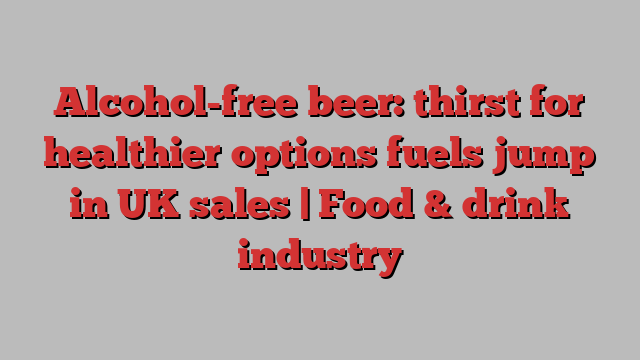
Sales of no- and low-alcohol beer are experiencing a summer surge, with brewers boosting production to meet growing demand.
The increasing thirst for beer that is not booze has been attributed to a growing desire among many individuals – particularly some generation Zs and millennials – to lead a healthier lifestyle, coupled with premium brands launching beers that are said to taste more “authentic”.
Tesco said sales of no- and low-alcohol beer were 25% higher in June than they were at the start of the year – showing that going booze-free is increasingly moving well beyond being just a “dry January” trend.
Guinness said that it would almost triple production of its zero-alcohol brand at its brewery in Dublin in response to a growing consumer taste for non-alcoholic drinks. Guinness 0.0 was launched in 2021 and is said to be the top-selling non-alcoholic beer in four-pack format in Great Britain.
In pubs, sales of low and no-alcohol beer have jumped by 23% during the past year compared with the previous 12 months, and have more than doubled since 2019, just prior to the pandemic, according to the British Beer and Pub Association.
It also reported that 85% of UK pubs – equivalent to about 39,000 venues – now offer at least one low- or no-alcohol beer alongside their usual ranges of alcohol-free options.
Half of the UK adult population bought a no-alcohol or low-alcohol product during 2022, boosting volumes by 9% last year, according to the IWSR, a company that analyses the drinks market. It said the UK “stands out as one of the world’s most dynamic markets for no- and low-alcohol”.
Tesco’s beer buyer, Jess Edmondson, said: “The current boom is down to the number of authentic-tasting products now available from brewers who are using high-quality ingredients and more advanced methods.
“This revolution has grown very quickly in the last five years, and instead of the thin-tasting alcohol-free beers that were on the market back then, shoppers can now find fuller-bodied equivalents that taste like the real thing.”
Edmondson said that as these products grew in popularity, it had also seen the emergence of new trends, with consumers buying in bulk rather than just single cans or bottles.
The alcohol-free brand Lucky Saint said it had seen its volume growth rocket by 180% in the last year. It even opened its own pub, the Lucky Saint, in London in March.
The founder, Luke Boase, said: “This idea that you have to apologise for not drinking is fading, and we’re seeing a rapid cultural shift in attitudes towards alcohol.
after newsletter promotion
“With the rise of great tasting alcohol-free drinks and a desire to lead healthier lifestyles, more people than ever are moderating their alcohol consumption.”
A growing number of beer brands have been entering the low- and no-alcohol space. Asahi launched an alcohol-free version of its Super Dry brand in the UK at the start of this year, just in time for dry January.
Meanwhile, a number of alcohol-free IPAs, stouts, ales and craft lagers have been rolled out by independent brewers in the past year.
Emma McClarkin, the chief executive of the BBPA, said: “More pubs than ever before now offer at least one alcohol-free beer, and this is a huge area of growth for our industry, with UK brewers leading the way when it comes to innovating with new technologies, techniques and tastes for low- and no-alcohol beers.”
That said, low- and no-alcohol beer – anything up to 1.2% ABV – still only represents 0.7% of sales of beer in the UK.